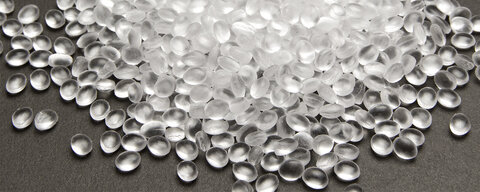You choose a product –
and get all the expertise
Trexan Chemicals
Are you looking for adhesive raw materials and specialty chemicals? We can supply them. In guaranteed quality, at stable prices, packed appropriately for transportation and delivered punctually. Do you need advice on choosing chemicals and/or raw materials or on the product formula? We are there for you. You can find our solutions for the relevant product area by clicking on the corresponding symbol.
more...
Dispersants
Dispersants
In the industry, it is often necessary to blend several substances that are normally immiscible due to their chemical properties (i.e. to promote dispersion). Dispersants enable this process by encouraging the dispersion of solids and suspension of liquid droplets and thus ensuring the flowability of both liquid-liquid and solid-liquid mixtures.
There are many types of dispersants, ranging from conventional polyacrylic acids to highly specialized dispersants that only react to specific pigments.
Some dispersants are able to provide electrostatic or steric stabilization, whereas others can promote interaction and cause the formation of superstructures in a liquid.
Dispersion increases a liquid's viscosity, thus preventing pigments from settling. Regardless of whether they are used on inorganic pigments, bulking agents or other kinds of particles, the effect of dispersants is strong and long-lasting.
When discussing dispersant effectiveness, a distinction has to be made between emulsions and suspensions. Emulsions are mixtures of two or more liquids (e.g. dispersed oil droplets in water), while suspensions refer to heterogeneous mixtures that contain tiny suspended solid particles (e.g. bulking agents and pigments in coatings).
Are you looking to purchase dispersing agents from reliable chemical manufacturers and suppliers? We offer a wide range of dispersants and other chemicals at fair prices. Nonetheless, we would like to start by providing you with more information concerning these chemicals.
Dispersants are surfactants with pigment-affinic functional groups. This means dispersants are able to interact with pigments and stabilize them, thus preventing agglomeration. During the dispersion process, dispersants are applied to agglomerated solids and then mechanical energy is used to break them up. Subsequently, the pigment particles that have been broken up are stabilized through electrostatic and steric interactions.
Are you still looking to purchase the right dispersants from reputable manufacturers and suppliers at a fair price? We at TER Chemicals would be happy to tell you more about our chemical products and help you find the right dispersant for your needs.
Industries
One major application of dispersants is in the manufacture of paints and coatings, where particles have to be suspended in a liquid. Dispersants are also widely used in the construction industry as additives in sealants, lubricants and adhesives. Furthermore, they are often added as plasticizers to cement-based and hydrated lime mortar due to their useful properties.
Besides the main applications mentioned above, dispersants also have a positive impact on the production of paper, pulp, rubber and fabrics, i.e. processes where solid and liquid components are required to form a homogeneous mixture as a dispersion.
Dispersants are mostly used as plasticizers in the construction industry. They are added to solids (e.g. concrete, cement and mortar) to improve flow properties. On the one hand, this increases the plasticity of floorings, drywalls and mortar mixtures. On the other hand, it substantially reduces the amount of water required in a mixture containing cement paste, fly ash or other aggregates - even when processing conditions remain unchanged.
Dispersants can also help concrete mixtures stay transportable and even pumpable for longer periods.
In the construction industry, another benefit of dispersants is that they have defoaming properties when added to many materials. The use of conventional defoaming agents can result in the formation of cavities, which are highly detrimental to the mechanical properties of a material, including its strength. And because many defoamers are oil-based rather than water-based, they are often not water-soluble and an oil-in-water dispersion is needed. An appropriate dispersant can render the use of defoaming agents unnecessary as the dispersant itself is already able to prevent foam formation.
Dispersants are also added to building materials (such as cement and mortar) to facilitate air entrainment. This intentional, controlled creation of air bubbles improves the workability of a material while it is being processed. The air pockets also serve as a buffer that protects hardened materials from the effects of expansion and contraction caused by temperature fluctuations.
During the manufacture of paints and coatings, it is crucial that solid pigments and extenders are evenly distributed in a liquid binder. This process is called pigment grinding. If this step is not performed optimally, it may result in negative effects, such as flocculation, mixing of shades, reduction of color vibrance, settlement of particles, and floating of pigments on the surface.
The flow properties of paints and coatings can likewise be negatively affected, leading to runs after a liquid paint or coating is applied.
Wetting and dispersing agents are used to prevent this from happening. These additives displace air and moisture on a pigment's surface and facilitate its wetting with the binder used. During this process, the binder enters the interstitial spaces in pigment agglomerates. After these agglomerates are broken up into tiny pigment particles using mechanical forces, the added dispersants will then stabilize the particles to prevent any uncontrolled flocculation.
Feel free to approach us if you need help finding the right dispersant for your needs.
















